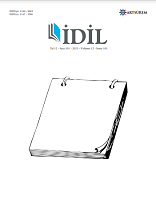KOSOVA VE KUZEY MAKEDONYA’DAKİ OSMANLI DÖNEMİ ERKEK MEZAR TAŞLARINDA FES TİPİ BAŞLIKLARIN DEĞERLENDİRİLMESİ
HEADGEARS ON OTTOMAN TOMBSTONES İN KOSOVO AND MACEDONİA
Author(s): Mücellâ Özkan, Rüçhan BUBURSubject(s): Archaeology, Cultural Anthropology / Ethnology, Culture and social structure , The Ottoman Empire, Sociology of Art, History of Art
Published by: Sanat ve Dil Araştırmaları Enstitüsü
Keywords: Kosovo; Macedonia; Tombstone; Fez; Ottoman period;
Summary/Abstract: Tombstones are important cultural assets that feature valuable information about the art, culture, and social structure of the societies they belong to, both with their inscriptions as well as their formal and ornamental characteristics. Men’s headdresses during the Ottoman period were symbols that revealed the profession and status of the person in the society. The headdresses had been rendered realistically on the tombstones, which had turned the tombstone into a piece of sculpture. The information on the history of clothing is mostly obtained through written and oral sources and the samples that have survived to the present day from previous generations. Gravestones are also one of the significant sources that provide reliable information about men's headdresses, which have a special place in Ottoman clothing. The fez, which can be defined as a flat and cylindrical headdress made of red wool fabric with a tassel; became an important symbol of the reform movements during the reign of Mahmut the Second. The fez, which had been used by the Ottoman society since the 16th century, was put into compulsory use by the army and public employees with an edict issued in 1829. The fez was varied in form with the desires of the Ottoman sultans. The same richness can be seen on the representations of the fez on the tombstones. In this article, headgears on male tombstones which represent a fez in Kosovo and Macedonia are classified and evaluated in a chronological order.
Journal: İdil Sanat ve Dil Dergisi
- Issue Year: 12/2023
- Issue No: 101
- Page Range: 119-133
- Page Count: 15
- Language: Turkish

